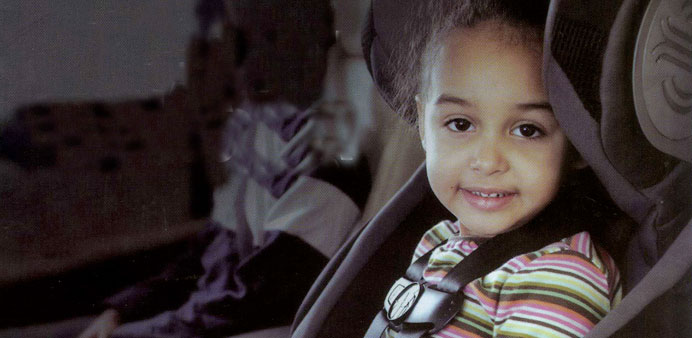By Noimot Olayiwola/Staff Reporter
Children can be prevented from sustaining serious injuries and even deaths during road crashes if parents install child car seats in a proper way, according to experts.
“Safety of children passengers in vehicles in Qatar is attracting concerns from the higher authority here as the use of car seat and harnesses in vehicles is almost non-existent,” Dr Khalid Abdulnoor Saifeldeen, chairman, Kulluna for Health and Safety Campaign said yesterday.
He mentioned that the incidence of children aged less than four years sustaining severe injuries in road accidents is on the increase.
“Children who suffer serious injuries in vehicle accidents are those who were not restrained or were sitting in the front seat. This trend needs to be addressed urgently … let us stop parents from putting their children in the front seats and also ensure that they are restrained while in the back seat,” Dr
Saifeldeen said.
“It can be challenging to change things overnight, but people need to understand that everyone has a role to play in order to achieve success, which is why we are collaborating and seeking help from international organisations such as Safe Kids Worldwide.”
Dr Saifeldeen, who is also HMC’s Hamad International Training Centre (HITC) director, said a number of initiatives are coming up to ensure children are safe in vehicles on Qatar’s roads.
The centre has just been recognised by Safe Kids Worldwide as one of its network of members with the inauguration of Safe Kids Qatar.
“We are hoping to work together to deliver a much stronger campaign,” he said.
A national child car seat initiative - One Second - launched earlier this year is gifting brand new car seat to every newborn at the Women’s Hospital in order to ensure children are restrained in vehicles in Qatar.
The official mentioned that HITC is open to all groups and individuals willing to learn about the technicality of installing car seat while informing about plans to host a child car seat check-up for members of Doha Mums, an expatriate group.
“We presently have some 20 child passenger safety technicians (CPST) and we are hoping to reach 30 by next week and hopefully to have hundreds when we have many parents learning as
technicians,” he added.
While sharing lessons from the US, Safe Kids Worldwide chairperson and chief executive officer Kate Carr noted that the impact of laws and legislation can only be seen when they are strictly
enforced.
“In the US, it took between seven-eight years after the inception of the child car seat laws for all states in the US to pass it but once the law took effects, we saw up to 58% decrease in accidents involving children in cars,” she recalled.
She also mentioned that educating and teaching parents on the importance of putting their children in the back seat could also help.
“Young children should not be in their parents’ hands (while driving) and in the front seat. It is also important for them to know the right seat, for instance children under two should use rare-facing seat and forward-facing after two years while those older should be in booster seat,” she said.
The following are the top five things to ensure a child car seat is safe:
Right seat: checking the label on the seat to make sure it’s appropriate for the child’s age, weight and height,
Right place: keeping all children in the back seat until they are 13 years (children aged 10 are officially allowed in Qatar to seat in the front),
Right direction: keeping children in rear-facing car seat for as long as possible, usually until around age two,
Inch test: Once the car seat is installed, give it a good shake at the base to ensure it does not move more than an inch side to side or front
to back,
Pinch test: making sure the harness is tightly buckled and coming from the correct slots. With the chest clip placed at armpit level, pinch the strap for any excess webbing at the child’s shoulder.

Children are safer in proper seats in vehicles.


